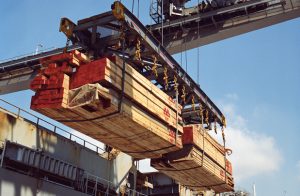Memo #91
By Paul Bowles – paul [at] unbc.ca
 Using the most common measure of economic openness – the ratio between exports and GDP – British Columbia’s (BC) economy has become less open in the past decade. In 2000, the provincial export to GDP ratio was over 25 per cent; by 2009 it had fallen to under 20 per cent. Is the province actually ‘de-globalizing?
Using the most common measure of economic openness – the ratio between exports and GDP – British Columbia’s (BC) economy has become less open in the past decade. In 2000, the provincial export to GDP ratio was over 25 per cent; by 2009 it had fallen to under 20 per cent. Is the province actually ‘de-globalizing?
Actually not. The main reason for the fall in the export/GDP ratio is the decline of forest exports. In 2000, wood products (primarily lumber) and pulp and paper were 49.3 per cent of the provinces’ exports and totaled $16.6 billion; by 2009, the value had fallen to $7.6 billion. This was only offset by small increases in the value of other exports such that total annual export values for the province had fallen by $8.5 billion over the 2000-2009 period.
Northern BC in particular is very busy ‘globalizing’ despite the fall in export volumes. The development of the Port in the Prince Rupert Harbour, the establishment of Prince George as an intermodal site, the extensive highway projects, and the future electrification of Highway 37 intend to reposition the north in the global economy. A global policy agenda is clearly evident.
The purpose of the globalizing strategy from the point of view of the north is to shift from a focus on resource exploitation to being also a transportation corridor for manufactured goods coming from Asia, the so-called Shanghai-Memphis link.
Trade with Asia, and China in particular, has moved from being an “export sideshow” to the most dynamic component of BC trade. In the past decade, lumber exports are up from $19 million to $668 million; pulp from $429 million to $1.28 billion, copper ore from $85 million to $410 million, and coal from zero to $833 million.
The provincial and federal architects of Canada’s Asia Pacific Gateway initiatives may be delighted but hold the celebration just yet. Exporting natural resources is hardly a new strategy for northern BC even if the destination of those exports is changing. The desire to stimulate greater manufacturing of those resources in BC is still unrealized.
About the Author:
Paul Bowles – Professor, Department of Economics, University of Northern British Columbia.
Links:
- Note: This Memo is part of ongoing work by a team of researchers at the University of Northern British Columbia (Paul Bowles, Fiona MacPhail, Jim McDonald, Tracy Summerville, Gary Wilson, and John Young) whose project “Globalizing Northern British Columbia” is supported by SSHRC
- For mill towns, China beckons, The Globe and Mail, August 2010
- Thousands of jobs forecasted for Chinese northern B.C. mining plan, The Prince George Citizen, March 2011
- Canada’s Mills Lumber Back to Life, Fueled by Chinese, The Wall Street Journal, November 2010
